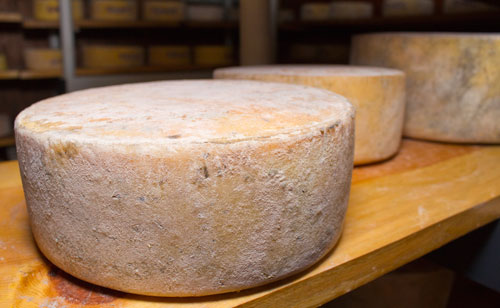
Food will prove to be among the most hotly debated issues in a new trade agreement between the United States and European Union (EU). In mid-December, the third round of negotiations took place in Washington D.C., between EU and U.S. trade negotiators. Formally known as the Transatlantic Trade and Investment Partnership (TTIP), the idea behind a new trade pact was first announced by President Obama and EU leaders last February.
Only two months removed from a formalized trade deal between the EU and Canada, food again garnered a major portion of this December's trade talks. Among the issues discussed were genetically modified crops, beef and chicken processing, beef quotas and geographical indications (GIs). The latter topic many dairy producers will recognize as EU trade negotiators have repeatedly spread a web across the globe to brand cheese names such as Parmesan, Provolone, Fontina and Gorgonzola. As part of a number of recently inked trade pacts, only European countries can sell cheese by these "branded names" in a number of Central American countries. It's enforced as the law of the land. In doing so, it closes the door to all competitors.
Meanwhile, in Canada's new free trade agreement (FTA) with the EU, Canada agreed to recognize 145 GIs. As part of the deal, new restrictions could be placed on common cheese names like Asiago, Feta, Fontina, Gorgonzola and Munster, according to the Consortium for Common Food Names, a trade group looking to head off this EU tactic to commodore food names that have long become household terms.
Think the same GI-situation thing couldn't happen in the U.S.?
Canadian dairy farmers didn't believe their quota system would be thrown under the trade negotiating bus. However, in the late-hour move, an additional 7 percent of the Canadian cheese market was opened up to tariff-free EU cheese imports. In a bargaining trade, Canadian negotiators gained greater access to beef and pork exports within the EU's market of 500 million people. All told, that additional access included nearly 45,000 tons of Canadian beef and 75,000 tons of pork - all duty or tax-free. The TTIP trade deal between the EU and U.S. would be much grander in scope. It would represent mutual access to nearly half of the world's global output.
The EU continues to draw some hard lines at the U.S.-EU negotiation table, reportedly ruling out potential imports of meat from animals supplemented with growth enhancers and GMO crops, according to a Reuters news report. Also, the EU is standing firm on GIs as it has in other trade talks around the globe. Not only are centuries old cheese names at stake, so, too, are commonly used names like Champagne (France) and Parma ham (Italy).
While the U.S. ag sectors (47 trade associations in all) have been communicating on this topic with American trade negotiators, no one knows for sure how negotiations could break in the final hour. The earliest a trade pact could be firmed up is late 2014. U.S. dairy producers need to keep a watchful eye on this process, as Canadian dairy producers never thought it would lose domestic market share to Europe.
How serious is Europe on GIs?
When Canadian and EU trade negotiators celebrated the deal, the EU had chefs serve a meal that included Gorgonzola (Italy) and Feta (Greece) as a part of a four-course meal, reported Reuters. At that gathering and photo op, EU trade chief Karel De Gucht called the Canadian-EU pact a "template" for negotiations with the United States. With the U.S. expected to pass $6 billion in dairy exports along with being home to one of the richest dairy markets outside of Europe, there is a great deal at stake.








